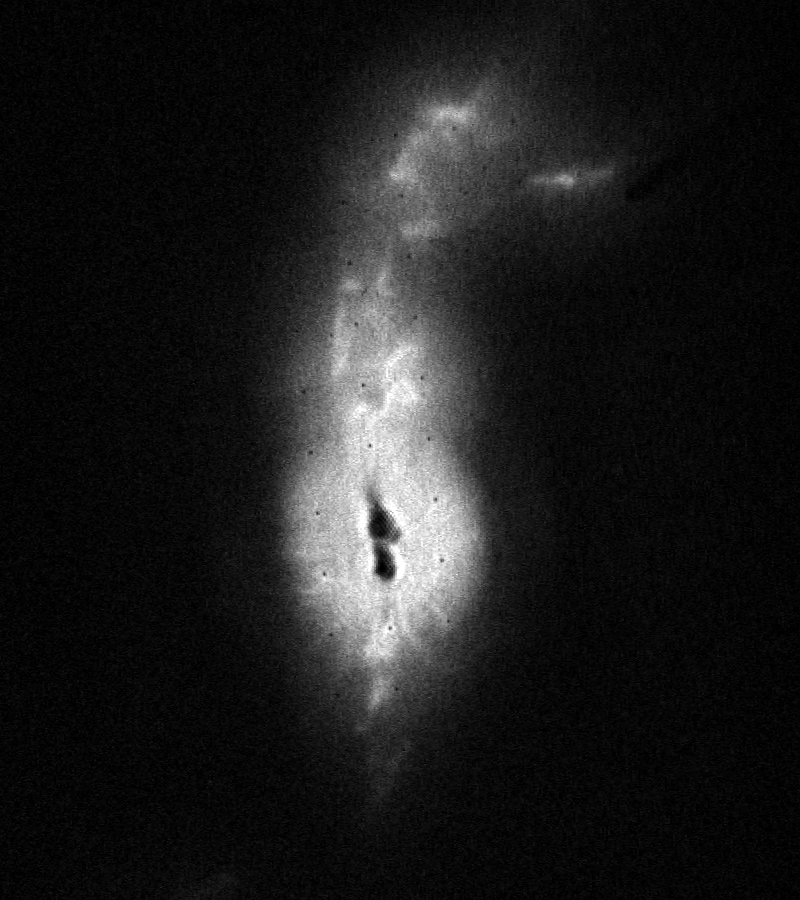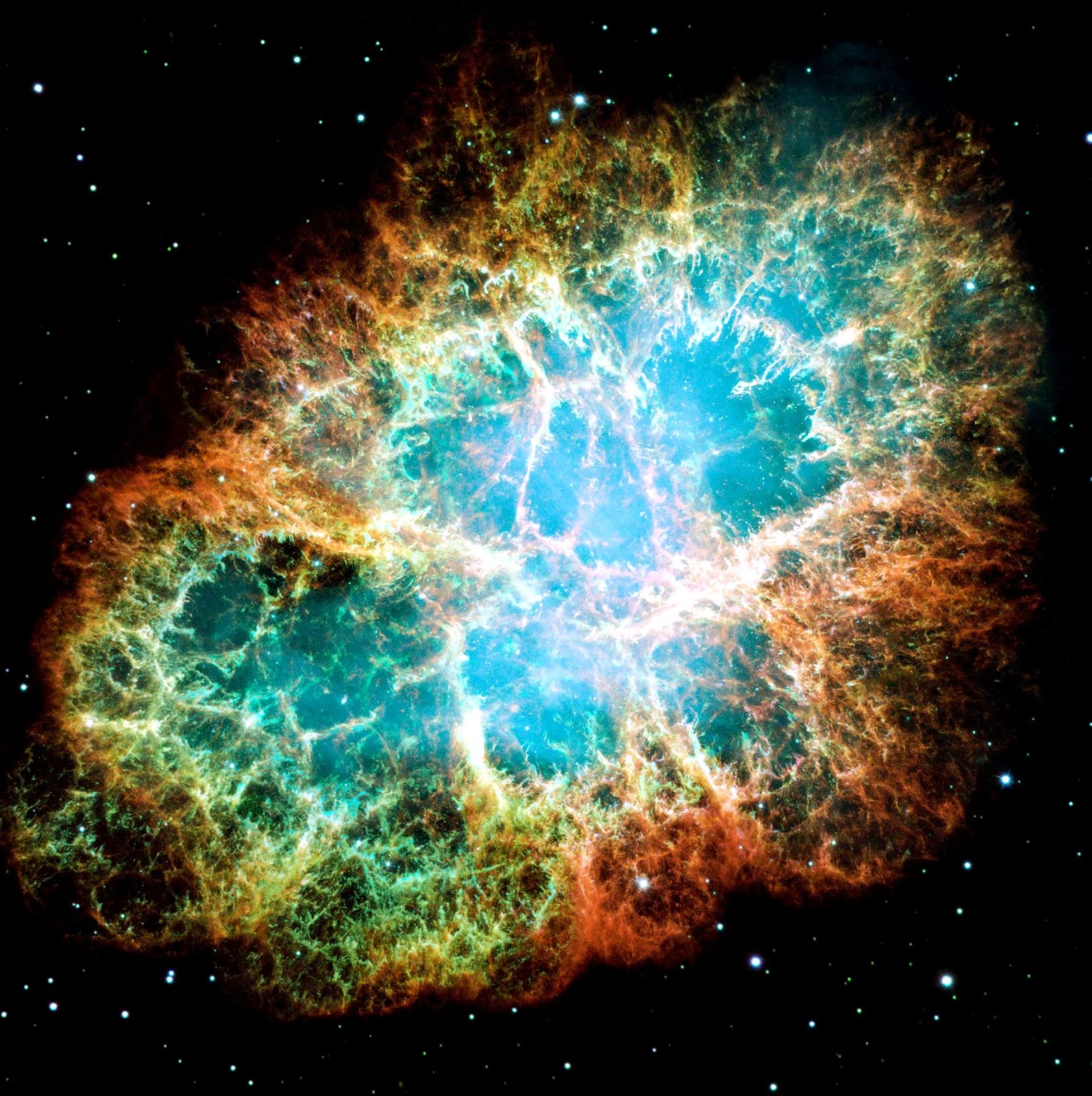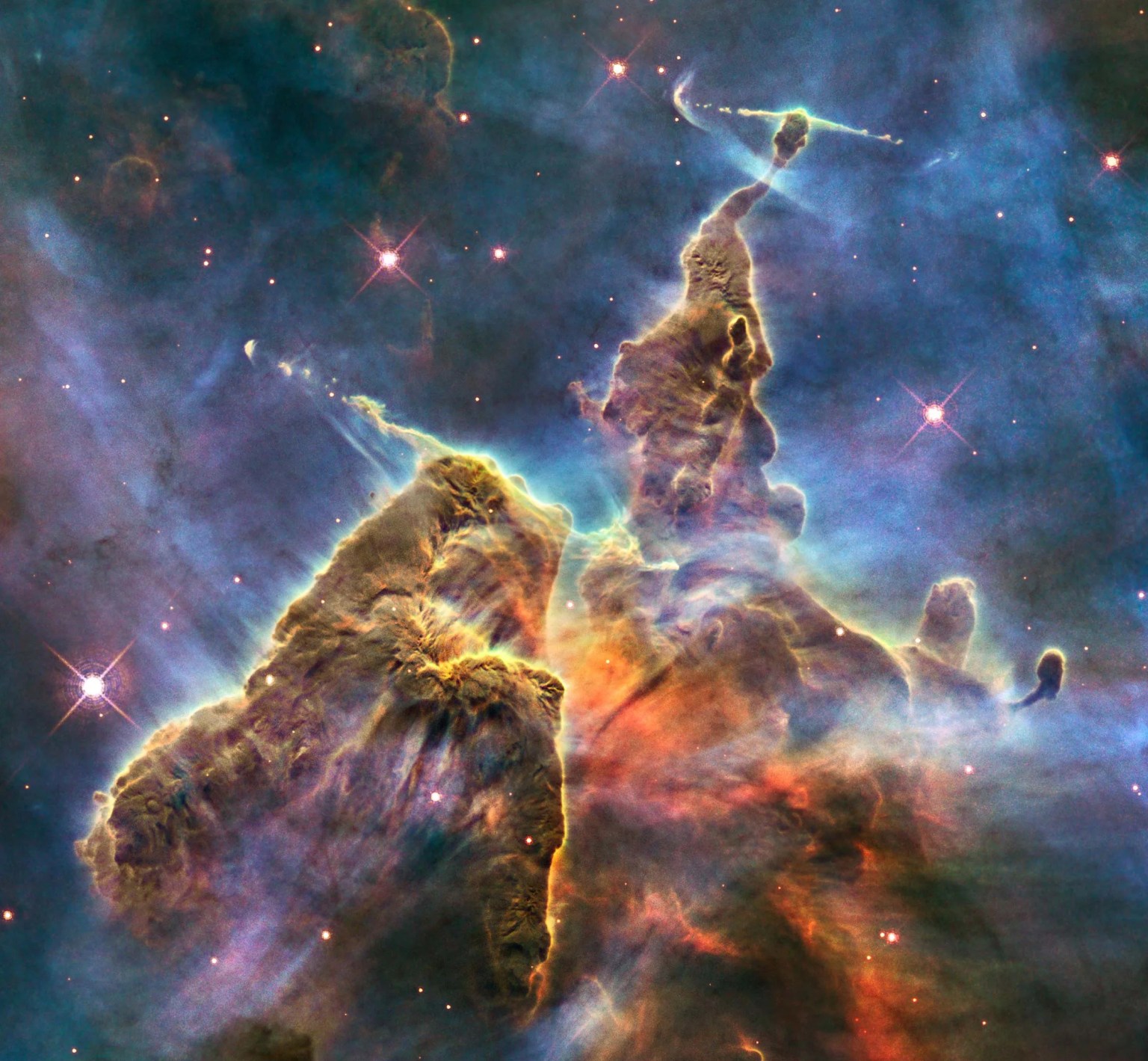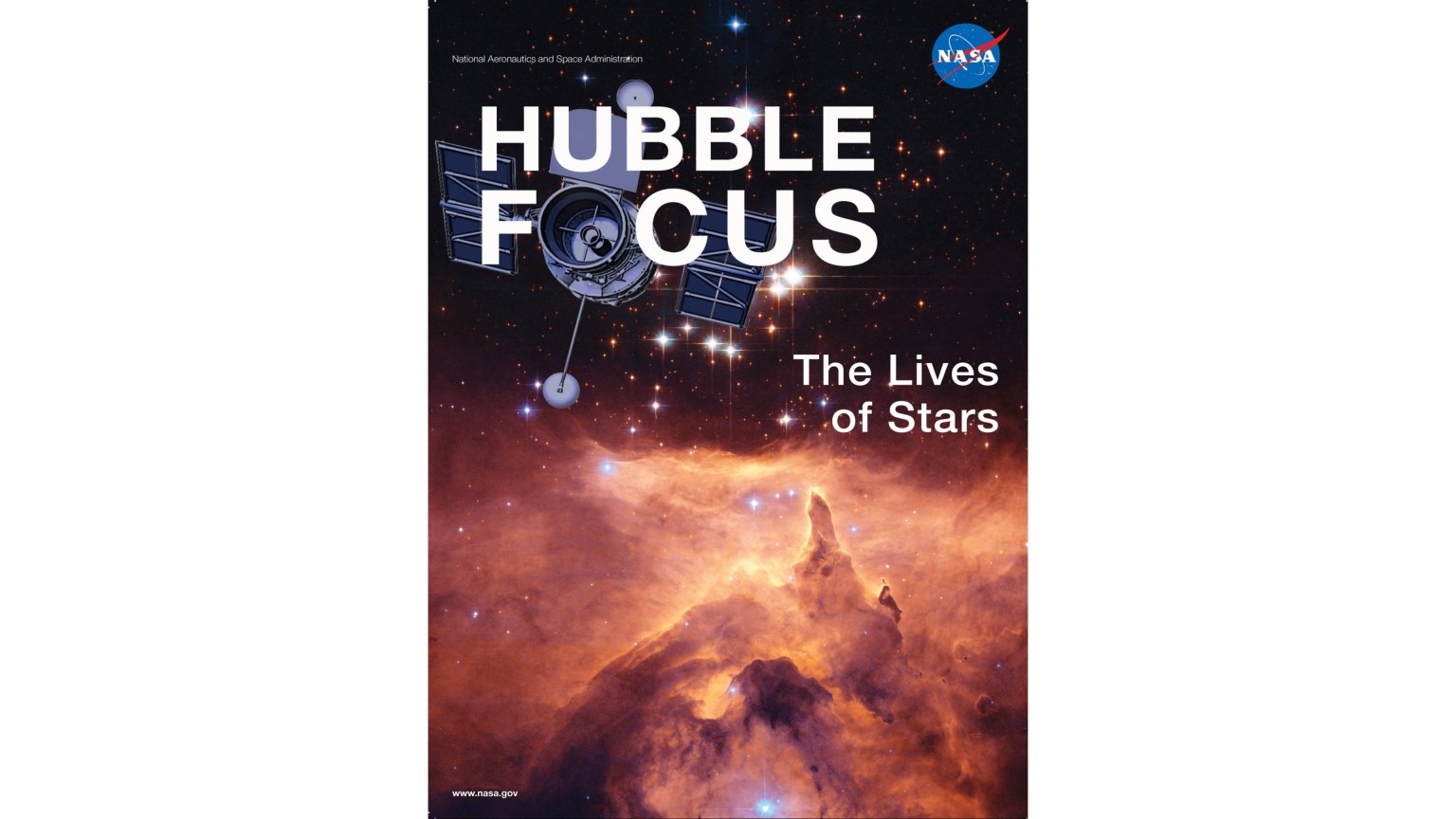
NASA's Hubble Space Telescope has peered into the inner core of the nearby so-called "symbiotic star," R Aquarii, to reveal dramatic new details of the exploding star. The observations were made with the European Space Agency's Faint Object Camera.
One of the closest stars known to undergo violent eruptions that spew out huge quantities of processed nuclear material into the surrounding space, R Aquarii was studied by none other than Edwin Hubble in an effort to understand the mechanism that powers the cataclysm. The instrumentation then available allowed him and his colleagues to conjecture that R Aquarii had erupted some 600 years ago. It has become clear since then that R Aquarii has actually undergone a series of violent eruptions – the latest one probably occurring in the late 1970's.
R Aquarii is an example of a class of double stars called symbiotic stars. In this object, it is speculated that the outburst occurs near or on the surface of a hot, compact, probably very old star that has already shed its outer layers to become a white dwarf. This star is violently reactivated by large quantities of fresh material falling onto it from a very nearby stellar companion. Thus fortified with fresh fuel, the white dwarf experiences an extremely rapid burst of nuclear burning akin to a hydrogen bomb. The energy released powers the ejection of a good part of the outer layers of the star at speeds of up to several hundred thousand kilometers per hour.
These events have more than just a passing interest to astronomers and laymen alike in that this is one known way – as well as the truly titanic but extremely rare supernova events – to release the chemical elements heavier than hydrogen and helium into the interstellar medium. Heavier elements like carbon, nitrogen, and oxygen are critical building blocks of planets like Earth and life forms such as our own. They are formed in the deep interiors of stars where the temperature is high enough to fuse hydrogen and helium – but where they are kept safely locked away from further use.
At a distance of only 700 light-years from us, R Aquarii is perfectly situated to permit a detailed investigation into the cause and the circumstances of this fascinating phenomenon. The unprecedented resolving power of the Faint Object Camera was recently trained on R Aquarii in order to witness first hand the detailed development of the explosion. The image shown in the accompanying photograph is the first picture taken by the Hubble Space Telescope of a recent nova. It shows the inner core of R Aquarii resolved into two very bright knots of emission separated by about 0.8 arcseconds surrounded by faint circular structures due to the "fog" created by the spherical aberration of Hubble's primary mirror. The two knots – probably harboring the double system – show up as dark spots in the picture due to saturation effects produced by the detector when it observes very bright objects. The fascinating aspect of this image is the linear filamentary features clearly seen emanating from the core. These are especially prominent above the core but fainter ones can be discerned below it. This is clearly plasma that has been ejected at high speeds from the "reactor" and which is emitting because it is bathed in high energy radiation emitted since the time of the eruption. The plasma emerges geyser-like in streams twisted by the force of the explosion and channeled upwards and outwards by strong magnetic fields. An obstruction in the path of the flowing material can also be discerned in the upper part of the image in consequence of which the material is forced to bend back on itself in a spiral pattern.
The scale of the event is extraordinary even in astronomical terms since emitting material can be traced out to at least 400 billion kilometers – or 2,500 times the distance between the Sun and Earth – from the central core. Images such as these and more to be taken during the lifetime of the Hubble Space Telescope are expected to revolutionize our ideas about such stellar "volcanoes" as R Aquarii, and shed increasing light on how nature redistributes the products of nuclear burning from deep inside stars and back into the universe.






























